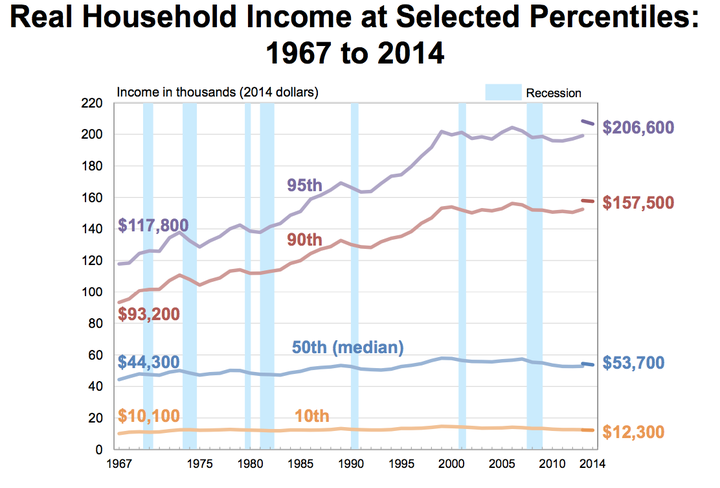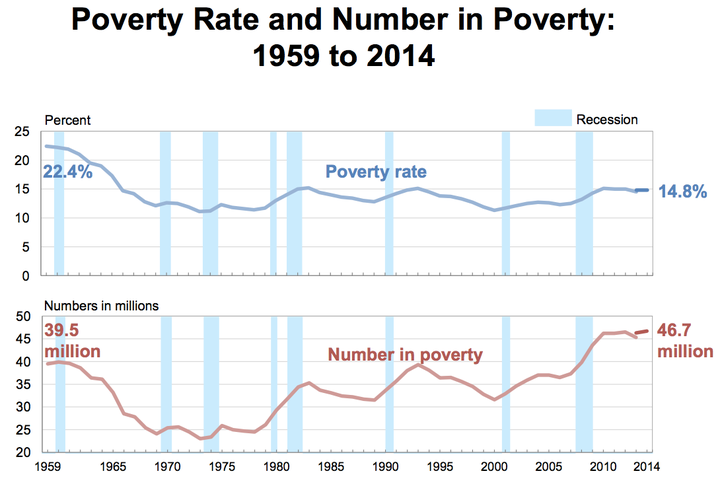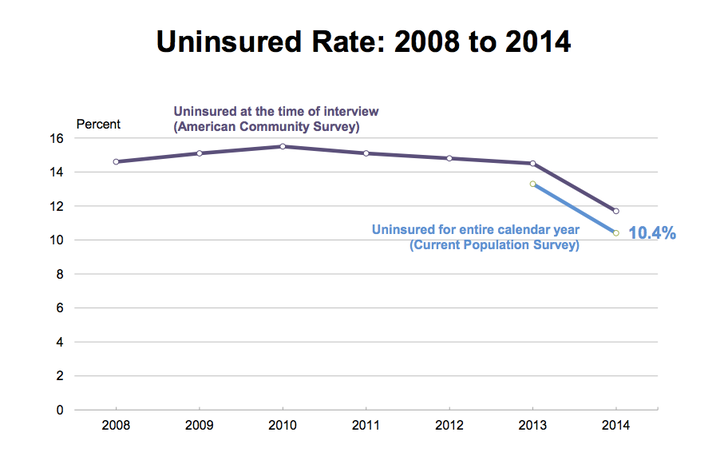
There's new data out today on incomes and poverty based on the Current Population Survey conducted jointly by the Census Bureau and the Bureau of Labor Statistics. At first glance, it's pretty boring: basically, nothing changed between 2013 and 2014, except for the number of people with health insurance.
On the other hand... nothing changed! When it comes to their financial situation, Americans were basically no better off than they were the year before. Incomes aren't growing, poverty is not falling. It would seem that important parts of the economy were totally stuck in neutral during 2014.
Furthermore, incomes for the bottom tenth of earners have barely budged since 1967. It's not just that we haven't made the poor better off in the last year, it's that we haven't made the poor much better off in the last 50 years (income-wise, anyway. There's evidence that they are somewhat better off thanks to federal benefits like SNAP and TANF).
Possibly worse, we've barely moved the needle at the 50th percentile. It's not until you get to the 90th percentile that you see a big difference between what people made 50 years ago (converted to 2015 dollars) and what they make today.
The official poverty rate didn't change from 2013, either. That means that as the population grows, so does the total number of people living in poverty in America.

There is, however, one part of the report that shows significant change over the course of last year: the number of people in America with health insurance.

The uninsured rate fell for nearly every age group, and fell particularly sharply for young adults between the ages of 20 and 30. This is a clear sign that Obamacare is working (thanks, Obama!)

